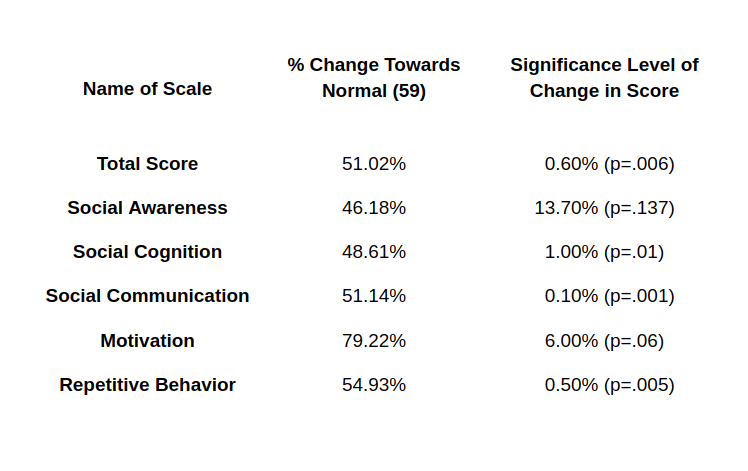Research Studies Demonstrate Remarkable Improvements in Autistic Socialization, Mood, Focus, Behavior, and Brain Function
This new approach works far more quickly and effectively–requiring far fewer sessions to produce major improvements in autistic issues–than any of the others described in many journal articles since Dr. Cowan presented the first case of autism successfully treated with neurofeedback in 1994. It is the only training system combining Neureka! and Focus.
The Socialize ACE™ trains the ability to Focus and sustain attention, and the ability to understand experiences (Neureka!) by putting together various types of perceptions, memories, and other information into a unified event. The individual with autistic issues, including Social Brain Dysfunction (SBD), lacks well developed and integrated systems to do this, the SBD sufferer has great difficulty making sense of their experience, and has problems learning appropriate behaviors.
Normalization after training indicated by highly significant (p = .006) improvements in the total T score, a decrease from 83.5 to 71.0 in their parents’ negative ratings, bringing the group average 51.0% closer to the normal score boundary of 59. “p” is the probability this occurred by chance–called the significance level. The smaller the better.




Most values improved over the normal boundary.
Major Changes in Younger Children With Both ADHD and Autistic Issues
Dr. Estate (Tato) Sokhadze has just demonstrated that a combination of the same two proprietary neurofeedback methods–Neureka! and Focus–in the Happi Focus Trainer made a major difference in the conduct and attention of a group of 10 children, averaging just over 10 years old, with both of these problems, even though they were usually treated only once a week.
The behavior changes were all rated by parents using three different scales, which overlapped to give a more complete picture of the clinically and statistically significant changes:
- The Aberrant Behavior Checklist (ABC) showed that their (average) Irritability decreased from 13.20 down to 7.30, and
- Their Hyperactivity decreased from 21.40 down to 14.10.
- The Achenbach System of Empirically Based Assessment (ASEBA) checklist of adaptive and maladaptive functioning demonstrated that their Attention Deficit scores decreased from 70.91 down to 65.36 and
- Their Conduct behavior scores decreased from 61.64 ± 6.39 down to 56.18.
- The Social Responsiveness Scale (SRS), which is considered the best measure of autistic issues, showed an overall T-score decrease from 84.50 down to 74.10.
This is a remarkable combination of improvements to observe in this very difficult population of younger children.
There are brainwave changes which indicate that both Focus and Neureka! training were responsible for these changes.
In the earlier published study, the 18 children and adolescents with high functioning autism were trained for 18 sessions to improve their Focus measure and raise the Neureka! measure above a minimum, while keeping it below a maximum, which was hard to reach. There were quite significant improvements in both the Focus and Neureka! EEG measures, comparing the first and last session. Increasing Neureka! made the experience enjoyable for the children, who were happy to participate. There were no drop-outs.


♦ Enhanced happiness ratings for at least four months.
♦ Increased happiness during the training session, leading to better compliance with training.
♦ Improved measures of attention.
♦ Improved memory.
- Takes a lot fewer sessions to show significant results (18 vs. 84).
- Sessions are shorter: 30 vs 45 minutes.
- Total training time for the studies of Socialize ACE™* was 14.2% of the Mente’s time.
- Socialize ACE™* showed highly significant improvements (51%) on the Social Responsiveness Scale – 2, while Mente showed no pre to post differences.
- Mente showed significantly worse scores on the Speech and Sensory/Cognitive Awareness scales of the Autism Treatment Evaluation Checklist after training.
- Mente’s study started out with 200 participants and ended up with only 14, which were clearly not a representative sample. Our studies have had no drop-outs.
- Socialize ACE™* trains both Focus and Neureka!, a brain system that integrates inputs and memories to understand events. What Mente does to improve EEG is unclear, but it does not include the 40 cycle rhythm.
